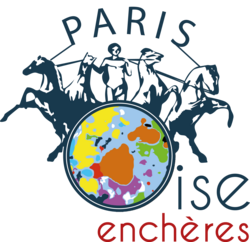Lot n° 279
Estimation :
600 - 800
EUR
Result with fees
Result
: 1 063EUR
Johan Barthold JONGKIND
Johan Barthold JONGKIND (1819-1891) M1128/9
Mountainous landscape
Watercolour and charcoal on paper signed with the stamp lower right and dated 16 Sept 76
10,5 x 17,5 cm (view)
On the back, an old label of the study Guy Loudmer in Paris n° 006435
Our drawing would be double sided
Framed under glass
Johan Barthold Jongkind was born on June 3, 1819 in Lattrop, in the east of the Netherlands. At the age of 16 he left school to work for a notary, but in 1837 his mother, who had been widowed for a year, allowed him to leave for The Hague to attend the Academy of Drawing. Jongkind became a student of a famous landscape painter, Andreas Schelfhout (1787-1870). In the biography he dedicated to Jongkind in 1918, Etienne Moreau-Nélaton will say : "One of the most precious gifts he got from Schelfhout, is the initiation to the quick watercolour after nature, giving the complete aspect of a landscape by a rough wash of colours, superimposed to a nervous and strongly structured drawing".
His early works reflect his attachment to the tradition of Dutch landscape painters of the 17th century. By the composition of his paintings first of all : low horizon - one third for the earth and two thirds for the sky -, diagonal rising from left to right, small characters populating the landscape, but also by the choice of the motives : canals, skaters, mills, even if Jongkind is more interested in the rendering of the light and the atmosphere than in the picturesque of the subject.
In 1845, Jongkind made a decisive encounter. The painter Eugène Isabey (1803-1886), who came to The Hague to attend the inauguration of a statue of William of Orange-Nassau, known as the Taciturn (1533-1584), German prince, Stadhouder of Holland, invited him to join his studio in Paris.
In 1846, Jongkind joined Isabey's studio and became his pupil. He meets many people in Paris, notably Daubigny, Baudelaire, Nadar, Rousseau, Corot... His jovial character allowed him to form solid friendships.
The painter particularly appreciates the quays of the Seine and the Notre-Dame district becomes one of his favourite subjects.
With Jongkind, the French landscape painting of the 19th century forges links with the Dutch landscape of the 17th century.
In the light of his paintings, by the atmosphere that emerges, we find the influence of Corot whom he admires.
But the composition remains classical, as in The Bridge at the Estacade: a large diagonal and a sky which, with the architectural elements, occupies the upper two-thirds of the painting. By representing this bridge in metal and reinforced cement, by showing human activity (fishermen's work, passers-by on the bridge...), Jongkind also embodies the "modernity" dear to the Impressionists.
Jongkind reaches a certain recognition during his first ten years in Paris. He is exhibited at the Salon as soon as 1848, receives a third class medal in 1852 and the State buys the Port of Harfleur in 1851 and the Pont de l'estacade in 1853. He is known by amateurs for his moonlights and his views of Paris.
But his financial situation remained precarious, especially since in 1853 the grant that King William I had given him during his studies in The Hague was cancelled. A tormented spirit, Jongkind is frequently prey to paranoid delirium, a fragility accentuated by excessive alcohol consumption. The absence of a reward at the 1855 Salon ends up depressing him. He confessed his torment in a letter to Eugène Smits: "What I experienced is incredible... I was not even given an honourable mention, nothing".
Overwhelmed by debts, Jongkind returns to live in Holland. However the links with France are not cut. He stays in Paris in 1857, receives a silver medal at an exhibition in Dijon in 1858, participates in the Salon of 1859 and sells his paintings almost exclusively in Paris through the intermediary of the dealer Pierre-Firmin Martin. But in Holland Jongkind continues to drink, debts accumulate again.
Informed of his condition, his friends, on the initiative of Count Doria, organize an auction to help him. Ninety-three artists, among them Corot, Daubigny and Diaz, participate by donating one work each. In April 1860, the fruit of the sale allows the painter Cals to be sent to Holland in order to pay Jongkind's debts and to bring him back to Paris. A fruitful period begins for the artist.
Back in France, Jongkind finds a certain psychological balance, thanks to the presence at his side of Mrs Fesser, a Dutch woman married to a Frenchman who takes care of him. It is also during these years that Jongkind affirms more and more clearly his own style and frees himself from the influence of his former masters.
From 1862, Jongkind returned to Normandy for a period of
My orders
Sale information
Sales conditions
Return to catalogue

